Welcome to the fascinating world of Sugar Gliders and their unique vocalizations. Among their various sounds, one of the most distinctive is their barking. These small, exotic animals have a remarkable way of using vocal cues to communicate with each other and their human caretakers. In this article, we will delve into the intriguing phenomenon of Sugar Glider barking and explore its meaning and significance.
Vocal Repertoire of Sugar Gliders: Exploring Barking Behavior
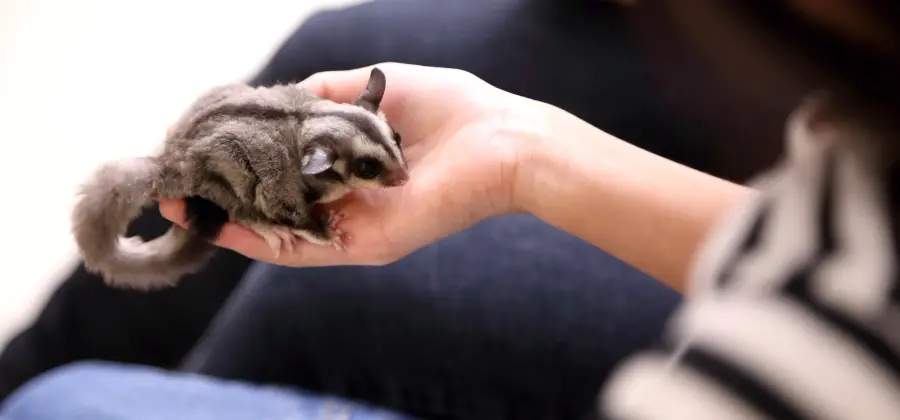
Sugar gliders are fascinating small marsupials native to Australia, Indonesia, and a few other places, and their adorable appearance and unique behaviors have made them popular pets across the globe.
When it comes to communication, sugar gliders are known to produce a range of sounds, including a distinctive barking noise that has piqued the interest of many pet owners. Understanding the meaning behind this particular vocalization can provide valuable insight into your sugar glider’s emotional and physical well-being.
Barking in sugar gliders can signify various emotions or needs, from excitement and attention-seeking to loneliness or even the presence of a potential threat. It is essential to observe your sugar glider’s body language and overall behavior to interpret the context of their barking better.
In some cases, barking could also be an indicator of health issues, like when accompanied by chewed-off nails and white film on their eyes, which signals that your pet might require medical attention.
In order to maintain a happy and healthy sugar glider, providing proper care, including a balanced diet, suitable cage mates, and regular check-ups, is crucial. By paying attention to your sugar glider’s barking and responding accordingly, you can create a more nurturing and stress-free environment for your beloved furry companion.
What are some examples of behaviors exhibited by sugar gliders?
Alert Sugar Glider, bored Sugar Glider, chatty Sugar Glider- sugar gliders showcase a range of behaviors. Classic sugar glider behavior includes coherent Sugar Glider communication through common barks.
Understanding Sugar Glider Barking
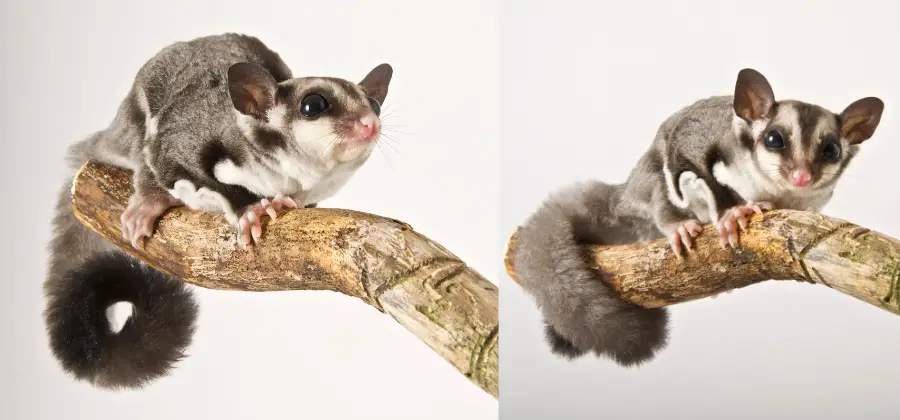
Communication
Sugar gliders are social creatures that use a variety of vocalizations to communicate with each other and their human caretakers. One of the most recognizable sounds they make is barking. Barking can indicate excitement, warning, or simply a need for attention.
It is crucial for sugar glider owners to understand the different barking sounds and their meanings to improve communication and bonding with their pets.
Warning Signal
When sugar gliders bark to warn others of danger or to express fear, their bark will have a different tone and urgency compared to when they bark due to excitement or attention-seeking.
By becoming familiar with this distinction, owners can promptly respond to the situation and ensure the safety of their pet. For example, a sugar glider may bark loudly and aggressively to alert their owner that they feel threatened or when they encounter a potential predator.
Attention Seeking
Sugar gliders may also bark to seek attention from their human caretakers or cage mates. A low-energy bark could mean that they are lonely and need company, putting them at risk of developing sugar glider depression.
The attention-seeking bark often has a softer tone and may be a sign that your sugar glider needs more social interaction, playtime, or other forms of mental stimulation. To address this, try to spend more quality time with your pet, provide interactive toys, or even consider getting them a cage mate to keep them company.
Identifying Sugar Glider Noises
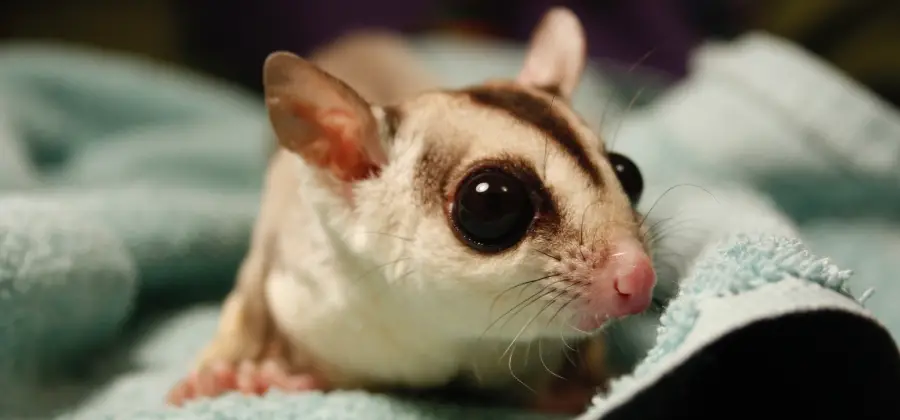
Sugar gliders are capable of making several different kinds of noises. Being able to identify these noises and understand what they mean can help you foster better communication with your pet. In this section, we’ll go over some common sugar glider noises, including crabbing, hissing, chirping, and purring.
Crabbing
Crabbing is a low, guttural sound produced by sugar gliders. They usually make this noise as a defense mechanism or a distress signal. When your sugar glider is barking, it may also start crabbing, so it’s crucial to recognize the difference between the two sounds for appropriate handling.
Hissing
Hissing is another sound made by sugar gliders to communicate. Unlike crabbing or barking, hissing serves as a warning and may be made when they feel threatened or frightened. It’s important to approach your sugar glider slowly and gently when they’re hissing to avoid causing them any further distress.
Chirping
Chirping is a high-pitched, melodic sound emitted by sugar gliders when they are excited or exploring. This sound can be an indication of happiness, as it’s often made during social interactions. When you hear your sugar glider chirping, it’s a sign they’re comfortable and content in their environment.
Purring
Purring is another noise made by sugar gliders that signifies happiness and contentment. Just like with cats, a sugar glider’s purring noise is consistent and soothing. When your sugar glider purrs, it usually means they’re comfortable with you and enjoying their surroundings.
Pay attention to the other noises your sugar glider makes in conjunction with purring to understand the full context of their emotions.
Interpreting Sugar Glider Body Language
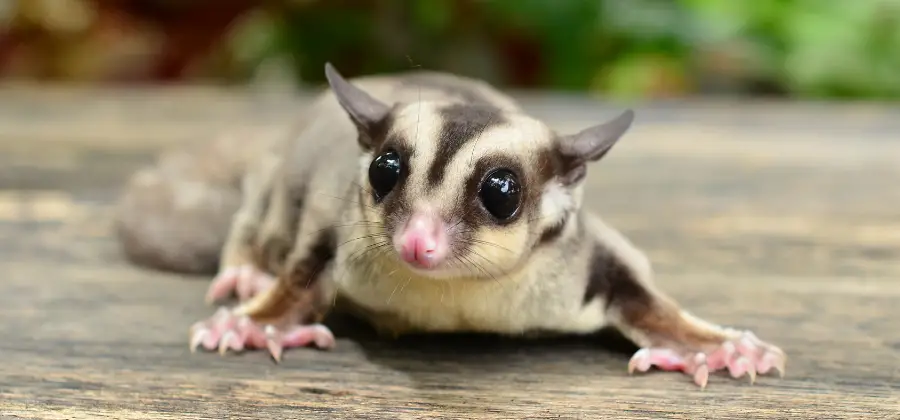
Sugar gliders communicate using vocalizations, but their body language is equally important to understand. In this section, we will discuss how to interpret sugar glider body language for social interaction, aggression, and dominance displays.
Social Interaction
Sugar gliders are social creatures, and they use various body postures to convey their emotions and intentions. Some common sugar glider social interactions include:
- Playful behavior: These usually involve chasing each other, jumping, climbing, and rolling, which are signs of a healthy, social sugar glider.
- Mutual grooming: This usually involves one sugar glider grooming another, indicating a close bond between the two and a sense of belonging.
- Huddling: Sugar gliders often huddle close to each other when they feel safe and comfortable, as a way of seeking warmth and companionship.
Aggression
Sugar gliders can display aggressive body language when they feel threatened. Some signs of aggression include:
- Crabbing: This is a warning signal indicating fear or aggression, characterized by loud, repetitive noises.
- Biting: When sugar gliders feel threatened, they may bite either their cage mates or humans.
- Body posture: An aggressive sugar glider might puff up its fur, arch its back or show its teeth as a sign of aggression.
Dominance Displays
Dominance displays are important in sugar glider colonies and help establish a hierarchy among group members. Some signs of dominance include:
- Mounting: One sugar glider might straddle or mount another, asserting dominance in the social hierarchy.
- Food dominance: Dominant sugar gliders may control access to food, pushing other members out of the way or taking food from them.
- Territory marking: Sugar gliders might mark their territory with scent glands, to establish their dominance within the area.
Sugar Glider Handling and Bonding
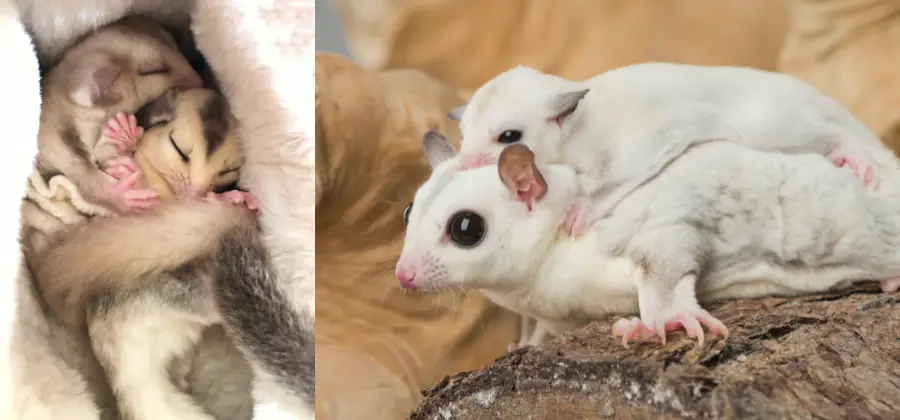
Sleeping Patterns
Sugar gliders are nocturnal animals, meaning they’re active during the night and sleep during the day. As a sugar glider owner, it’s essential to keep this in mind when handling and bonding with your pet. Try to interact with them during their waking hours to avoid disturbing their natural sleep cycle.
Holding Techniques
When holding a sugar glider, it’s important to be gentle and cautious. One recommended method to handle your sugar glider involves using a bonding pouch. First, turn the pouch inside out and place your hand inside it like a mitten. Then, reach inside the cage and quickly, yet smoothly, scoop up your sugar glider with your “gloved” hand.
This approach helps reduce stress for both you and your pet during handling. Remember, sudden movements or loud noises can scare your sugar glider, so try to remain calm and quiet when interacting with them.
Scent Marking
Sugar gliders are social creatures, and scent marking plays a significant role in communication and bonding. Sugar gliders will often scent mark their owners and items in their environment to establish a sense of familiarity and safety.
To encourage bonding, let your sugar glider scent mark a piece of your clothing or their bonding pouch. This process allows your pet to associate your scent with comfort and security. Regular interaction and time spent with your sugar glider can also help strengthen the bond between you and your pet.
What Noises do a Sugar Glider Make? Watch this video
Creating a Comfortable Environment
Cage Setup
To provide a comfortable environment for your sugar glider, it’s essential to start with a proper cage set-up. The cage should be a minimum size of 24 inches wide, 24 inches deep, and 36 inches tall. The larger the cage, the better, as sugar gliders love to climb and glide. Make sure to include branches, nesting boxes, and toys for your sugar glider to play with and explore.
- Opt for a tall cage with horizontal bars for climbing
- Provide lots of hiding spots and sleeping options
- Ensure a clean and hygienic cage – change the bedding often and clean food dishes.
Creating a safe environment for your sugar glider is crucial for their well-being.
Social Hierarchy
Sugar gliders are highly social animals and thrive in the company of other sugar gliders. They establish a social hierarchy within their group, as they would in the wild. Make sure to introduce new sugar gliders slowly and monitor their interactions to ensure they get along well.
- Introduce new sugar gliders gradually.
- Observe interactions between sugar gliders to ensure harmony
Understanding the barking habits of sugar gliders can also help in creating a comfortable environment.
Overcrowding
While the companionship of other sugar gliders is essential, overcrowding can lead to stress and territorial behavior. Make sure your sugar glider’s cage is large enough to house all its inhabitants while avoiding overcrowding comfortably.
- Avoid overcrowding in cages – provide plenty of space for each sugar glider.
- Ensure the cage size increases with the number of sugar gliders
By following these guidelines and paying attention to your sugar glider’s needs, you can create a comfortable environment in which they can thrive and feel at ease.
Dealing with Sugar Glider Distress and Misconceptions
Identifying Concerns
When your sugar glider is upset or frightened, it’s crucial to recognize and address their distress signals. Barking is one such signal, often indicating fear, stress, or anxiety in these animals.
If you notice your sugar glider exhibiting this behavior, it’s essential to approach them calmly and gently, avoiding any sudden movements or loud noises that may further exacerbate their distress.
Apart from barking, sugar gliders also produce other vocalizations like chirping, clicking, and hissing to communicate with their owners. It’s important to learn the different meanings behind these sounds, as they play a significant role in strengthening the bond between you and your pet.
Common Misunderstandings
There are a few misconceptions surrounding sugar glider behavior and how to manage their distress. Below we’ll address some common misunderstandings:
- All sugar glider barking is a sign of distress: While barking can be a distress signal, it can also indicate other emotions or needs, such as excitement or hunger. It’s essential to observe your sugar glider’s overall behavior and the context of their vocalization to identify the underlying cause.
- Ignoring sugar glider’s distress won’t have consequences: Neglecting a sugar glider’s distress signals can lead to further stress and trauma, potentially damaging the bond between you and your pet. Always address and respond to these signals appropriately.
- Sugar gliders are nocturnal and should be left alone during the day: Although they are mainly nocturnal, sugar gliders do have periods of daytime activity. Ensure your pet’s environment accommodates their sleep schedule and natural behavior, giving them opportunities to interact with you and their surroundings during both day and night.
By debunking these misconceptions and understanding sugar glider distress signals, you can foster a strong, healthy relationship with your pet and ensure they feel secure and comfortable in their environment.
Unveiling the Intriguing World of Sugar Glider Barking: From Common Sounds to Nocturnal Creatures
In conclusion, sugar glider barking is a remarkable form of communication exhibited by these expressive creatures. The sugar glider bark, along with a variety of vocalizations, serves as a means for them to convey messages and emotions.
The vocal creature, the sugar glider, may exhibit a variety of sounds due to varied reasons, including a stressed sugar glider, a poor diet, and the presence of natural predators. As a responsible sugar glider parent, it is crucial to provide a varied and nutritious diet to ensure their well-being.
Additionally, understanding their behaviors and providing appropriate care can help alleviate stress and promote a harmonious relationship with these adorable creatures, including the sugar bear.
They use their vocal abilities to express their favorite food choices, alert fellow sugar gliders of potential dangers like a swarm of locusts or the presence of noisy and strange animals, and communicate their needs and desires.
From time to time, sugar gliders demonstrate their natural instincts through vocalization, such as high-pitched noises, snake hisses, and other distinctive sounds. It is important for pet owners to pay attention to signs of distress, respiratory issues, and seek veterinary advice when necessary.
Providing a varied and balanced diet, maintaining an enriched cage environment, and engaging in plenty of enrichment activities contribute to the well-being and happiness of these adorable and delicate creatures.
By understanding their behavior and responding to their needs, pet lovers can build a stronger bond with their sugar gliders and ensure their optimal care.
Conclusion: Sugar Glider Barking

In conclusion, sugar glider barking is a fascinating form of communication exhibited by these nocturnal creatures. The sugar glider bark, along with other types of sounds, serves as a means for them to express various needs and emotions.
From signaling their favorite food to alerting fellow sugar gliders of potential dangers, these vocalizations create a strong bond within their community. As pet owners, it is crucial to understand the significance of sugar glider communication, especially when caring for baby sugar gliders, female sugar gliders, or stressed individuals.
By recognizing their repetitive sounds and responding to their needs in a timely manner, we can ensure their well-being and foster a harmonious relationship. So, embrace these unique vocalizations and cherish the remarkable bond you share with your pet sugar glider, as they communicate their world to you, one bark at a time.

